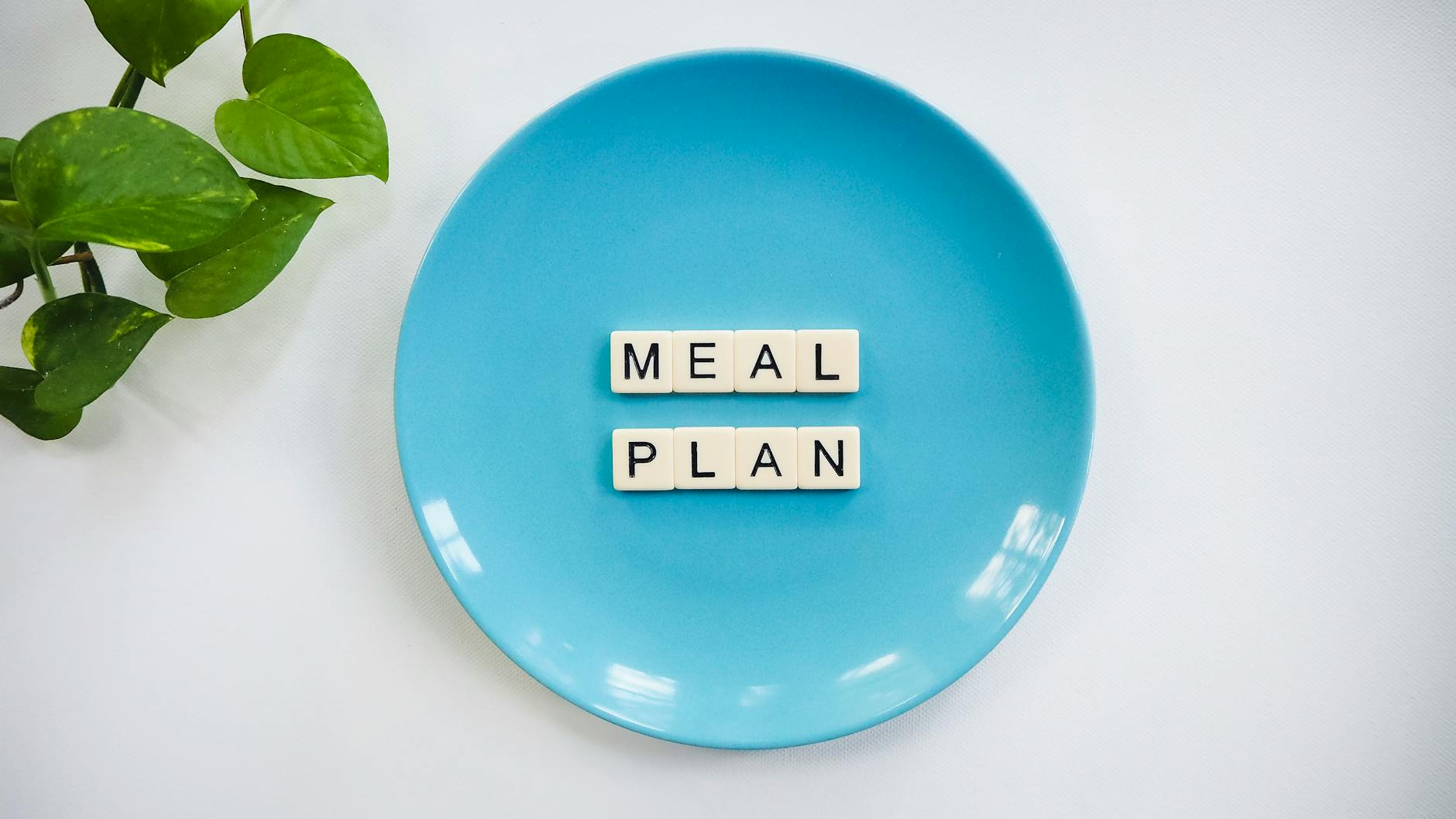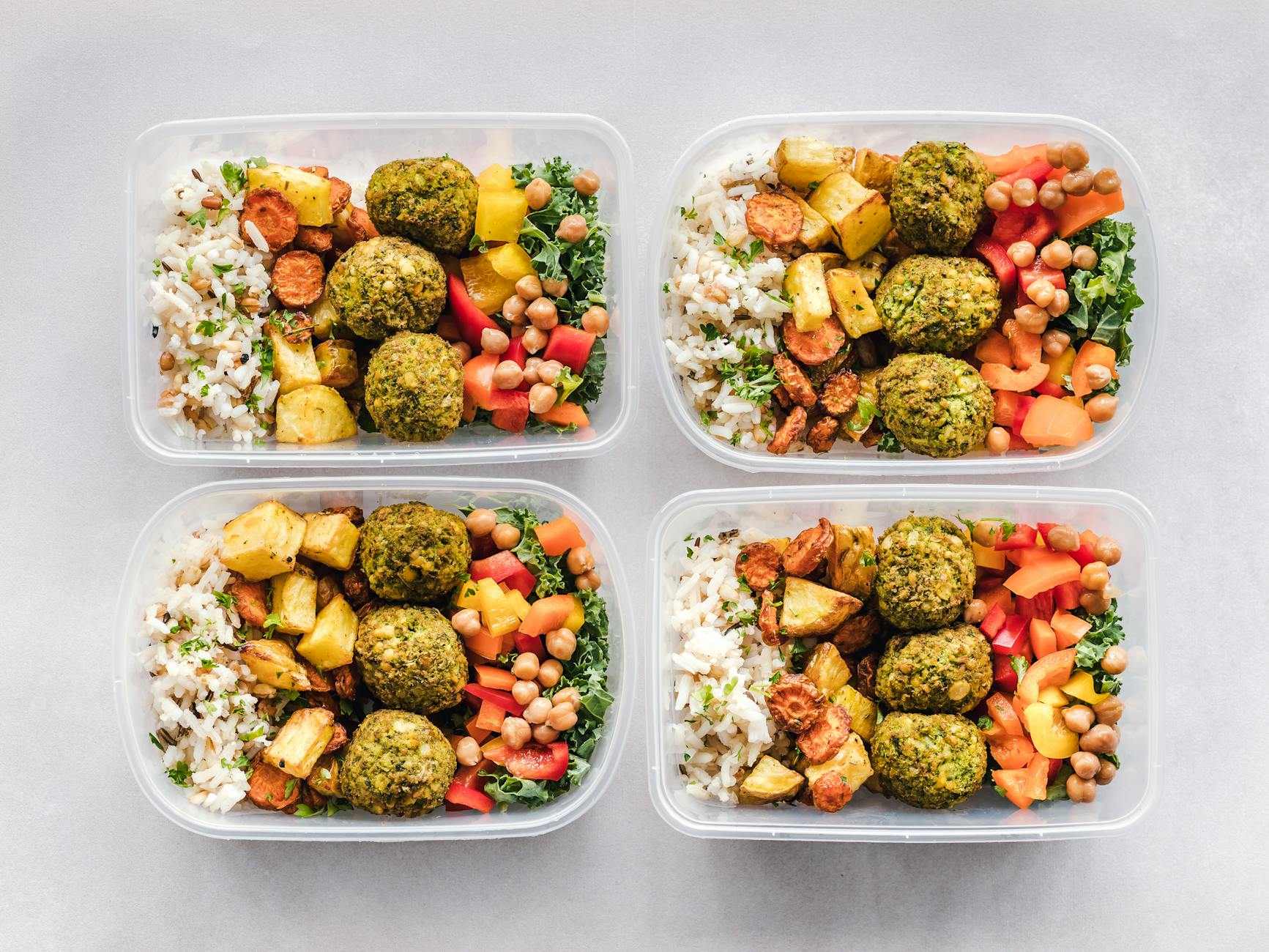"How to Build an Effective and Sustainable Meal Plan for Your Fitness Goals
"How to Build an Effective and Sustainable Meal Plan for Your Fitness Goals

🍎 Tired of jumping from one diet to another without seeing lasting results? You're not alone. 83% of people who start a new diet abandon it within the first month, often because they've chosen an unsustainable approach that doesn't align with their lifestyle or fitness goals.
Whether you're looking to build muscle, lose weight, or simply maintain a healthier lifestyle, creating an effective meal plan is the cornerstone of success. But here's the thing - it's not just about counting calories or following the latest food trends. It's about developing a personalized, sustainable nutrition strategy that works for your body, your schedule, and your goals.
In this comprehensive guide, we'll walk you through the essential steps of building a meal plan that not only delivers results but becomes a natural part of your daily routine. From understanding your nutritional requirements to troubleshooting common challenges, you'll discover how to create an eating plan that finally sticks. 💪

Understanding Your Nutritional Needs
Calculate Daily Caloric Requirements
Your daily caloric needs depend on several key factors:
-
Basal Metabolic Rate (BMR)
-
Activity Level
-
Age and Gender
-
Current Weight and Goals
Use this simple formula to estimate your maintenance calories:
| Activity Level | Multiplier | Example (2000 BMR) |
|---|---|---|
| Sedentary | BMR x 1.2 | 2400 calories |
| Moderately Active | BMR x 1.5 | 3000 calories |
| Very Active | BMR x 1.8 | 3600 calories |
Determine Macronutrient Ratios
A balanced macronutrient distribution typically follows these guidelines:
-
Protein: 10-35% of daily calories (0.8-2.2g per kg of body weight)
-
Carbohydrates: 45-65% of daily calories
-
Fats: 20-35% of daily calories
Identify Micronutrient Requirements
Essential micronutrients include:
-
Vitamins A, B, C, D, E, and K
-
Minerals like iron, calcium, and zinc
-
Electrolytes such as potassium and magnesium
Assess Current Eating Habits
Track your current diet for one week, noting:
-
Meal timing patterns
-
Food preferences and aversions
-
Emotional eating triggers
-
Portion sizes
Now that you understand your nutritional requirements, let's explore how to set realistic fitness goals that align with these needs.

Setting Realistic Fitness Goals
Define Short-term and Long-term Objectives
Setting realistic fitness goals requires a balanced approach between immediate achievements and future aspirations. Here's how to structure your objectives:
Short-term vs. Long-term Goals:
| Timeframe | Examples | Characteristics |
|---|---|---|
| Short-term (1-3 months) | Lose 1-2 lbs per week, Add one serving of vegetables per meal | Specific, immediately actionable |
| Long-term (6-12 months) | Reach ideal body weight, Maintain consistent eating habits | Broader, require sustained effort |
Match Meal Plans to Specific Goals
Different fitness objectives require distinct nutritional approaches:
-
Weight Loss: Create a moderate caloric deficit (300-500 calories)
-
Muscle Gain: Increase protein intake and maintain caloric surplus
-
Athletic Performance: Focus on timing of carbohydrates and protein
-
General Health: Balance macronutrients and emphasize whole foods
Create Measurable Milestones
Track your progress using these key metrics:
-
Weekly weight measurements
-
Monthly body measurements
-
Progress photos every 4-6 weeks
-
Food diary consistency
-
Energy levels and workout performance
Setting benchmarks helps maintain motivation and allows for necessary adjustments. For optimal results, review and adjust your milestones every 4-6 weeks based on progress.
Now that you have established clear fitness objectives, let's explore how to structure your meal plan to achieve these goals effectively.

Structuring Your Meal Plan
Choose Meal Frequency
The ideal meal frequency depends on your lifestyle and fitness goals. Most successful meal plans include 3-5 meals per day, with the following common patterns:
| Meal Pattern | Timing | Best For |
|---|---|---|
| 3 meals | Every 5-6 hours | Busy professionals |
| 5-6 meals | Every 2-3 hours | Athletes, bodybuilders |
| 4 meals | Every 4 hours | General fitness |
Plan Portion Sizes
Control portions using these practical measurements:
-
Protein: Palm-sized portion (20-30g)
-
Carbohydrates: Cupped hand (40-60g)
-
Fats: Thumb-sized portion (7-12g)
-
Vegetables: Two fist-sized portions
Time Meals Around Workouts
Strategic meal timing optimizes performance and recovery:
-
Pre-workout: Eat 2-3 hours before exercise
-
Post-workout: Consume protein and carbs within 30 minutes
-
Recovery meal: Complete meal within 2 hours
Include Healthy Snacks
Keep these nutrient-dense snacks handy:
-
Greek yogurt with berries
-
Apple with almond butter
-
Hard-boiled eggs
-
Trail mix (limited portion)
Schedule Cheat Meals
Plan one weekly cheat meal to maintain sustainability:
-
Schedule for social occasions
-
Limit to one serving
-
Return to regular eating immediately after
Now that you have a structured approach to meal planning, let's explore the specific foods that will help you reach your goals.

Selecting the Right Foods
Create a Shopping List
Creating a comprehensive shopping list is crucial for successful meal planning. Organize your list by food categories and store sections to make shopping efficient and ensure you don't miss essential items.
| Category | Examples | Benefits |
|---|---|---|
| Proteins | Chicken, fish, eggs | Muscle repair and growth |
| Carbs | Brown rice, quinoa | Sustained energy |
| Fats | Avocados, nuts | Hormone regulation |
| Produce | Leafy greens, berries | Vitamins and minerals |
Choose Quality Protein Sources
Select these high-quality protein options:
-
Lean meats (chicken breast, turkey)
-
Fish (salmon, tuna, cod)
-
Plant-based proteins (lentils, chickpeas)
-
Dairy products (Greek yogurt, cottage cheese)
Select Complex Carbohydrates
Focus on nutrient-dense carbohydrates that provide sustained energy:
-
Whole grains (oats, brown rice)
-
Sweet potatoes and other starchy vegetables
-
Legumes
-
Ancient grains (quinoa, amaranth)
Include Healthy Fats
Incorporate these essential fats for optimal health:
-
Nuts and seeds
-
Olive oil and avocado oil
-
Fatty fish
-
Chia and flax seeds
Now that you have a clear understanding of food selection, let's explore how to make your meal plan sustainable for long-term success.

Making Your Plan Sustainable
Prep Meals in Advance
Meal prepping is the cornerstone of a sustainable nutrition plan. By dedicating 2-3 hours weekly to preparation, you'll save time and stay consistent with your goals. Here's a practical meal prep schedule:
-
Sunday: Main protein sources and complex carbohydrates
-
Wednesday: Mid-week refresh of vegetables and quick-prep items
-
Daily: 10-minute morning routine for portioning
Build in Flexibility
A sustainable meal plan must accommodate real life. The 80/20 rule works well here:
| Meal Type | Percentage | Purpose |
|---|---|---|
| Planned Meals | 80% | Maintain nutrition goals |
| Flexible Meals | 20% | Social events, cravings |
Track Progress and Adjust
Monitor your adherence and results with these key metrics:
-
Weekly weight measurements
-
Monthly body measurements
-
Energy levels throughout the day
-
Workout performance
-
Food satisfaction levels
Adjust your plan based on these indicators. If you're consistently struggling with certain meals, modify them rather than abandoning the entire plan. Small tweaks, like swapping brown rice for quinoa or adjusting portion sizes, can make a significant difference in sustainability.
With these sustainable practices in place, let's explore how to handle common challenges that might arise during your fitness journey.

Troubleshooting Common Challenges
Handle Dining Out
-
Track restaurant meals using these strategies:
-
Review menus online before dining
-
Ask for dressings and sauces on the side
-
Choose grilled over fried options
-
Request modifications to match your plan
-
Manage Cravings
Implement these evidence-based techniques to control cravings:
| Craving Type | Management Strategy | Alternative Choice |
|---|---|---|
| Sweet | Wait 15 minutes | Fresh fruit |
| Salty | Drink water | Nuts or seeds |
| Carb-heavy | Eat protein first | Greek yogurt |
| Fatty | Take a walk | Avocado |
Adjust for Schedule Changes
-
Create backup mini-meal plans for:
-
Business trips
-
Weekend activities
-
Unexpected overtime
-
Family emergencies
-
Keep healthy portable snacks ready: nuts, protein bars, or fruit.
Deal with Plateaus
Break through plateaus using these adjustments:
-
Recalculate caloric needs
-
Rotate food choices
-
Adjust meal timing
-
Incorporate refeed days
When progress stalls, document everything for two weeks. Look for hidden calories or missed meals. Sometimes, increasing calories slightly can restart progress by preventing metabolic adaptation.
Now that you've learned to handle common obstacles, focus on consistency rather than perfection. Remember that small adjustments can lead to significant improvements in maintaining your meal plan.

Creating a successful meal plan that aligns with your fitness goals doesn't have to be complicated. By understanding your nutritional needs, setting achievable goals, and selecting the right foods, you can develop a sustainable eating pattern that works for your lifestyle. Remember that flexibility and consistency are more important than perfection when it comes to long-term success.
Take the first step today by implementing small, manageable changes to your eating habits. Start with structuring your meals around whole foods, plan your portions mindfully, and allow room for adjustments as you progress on your fitness journey. With patience and dedication, your personalized meal plan will become a natural part of your daily routine, helping you achieve and maintain your desired fitness outcomes.Thanks For Reading https://app.temu.com/m/m1h6vlw6szk

Comments
Post a Comment